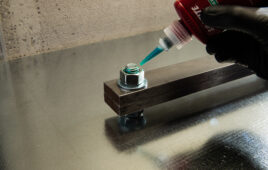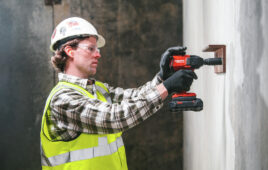By Ronald A. Miller, MS
Adhesives are made from organic polymers and, as such, are inherently thermal and electrical insulators. The thermal conductivity of polymers is typically between 0.1 and 0.5 W/m-K (watts per meter kelvin). In comparison, steel has a thermal conductivity of about 40 W/m-K and copper is about 400 W/m-K, when measured at room temperature.
 Therefore, thermally conductive fillers need to be added to polymeric materials to increase the thermal conductivity of the final composition. The thermal conductivity is dependent on the nature of the filler and the amount of filler added. There is a minimum level of filler needed to be effective, and above that amount, the conductivity increases with increased filler content.
Therefore, thermally conductive fillers need to be added to polymeric materials to increase the thermal conductivity of the final composition. The thermal conductivity is dependent on the nature of the filler and the amount of filler added. There is a minimum level of filler needed to be effective, and above that amount, the conductivity increases with increased filler content.
Small increases in thermal conductivity can be achieved with low-cost materials, such as carbon black and graphite, which can achieve a thermal conductivity of 1 to 2 W/m-K in polymer compounds. Powdered stainless steel is also used and can increase the thermal conductivity to 4 to 5 W/m-K. Ceramics, such as aluminum nitride and boron nitride, can increase thermal conductivity to 10 W/m-K or more.
Achieving higher thermal conductivity typically requires filler loadings of 60 to 70% by weight. In adhesives, the filler content that can be used is limited to maintain a low enough viscosity, which allows the adhesive to flow sufficiently to fill gaps and adequately wet the surface of the substrates. The available thermal conductivity in adhesives is from 0.5 W/m-K to 4.0 W/m-K.
Additionally, materials that increase thermal conductivity also increase electrical conductivity — which can be a problem in electrical applications. For these situations, adhesives with ceramic fillers (such as aluminum nitride and boron nitride) and certain mineral fillers would be used because of the insulating properties of these materials.





Tell Us What You Think!